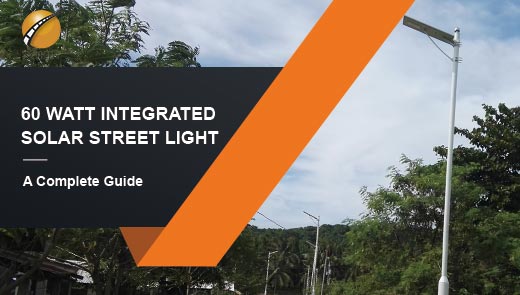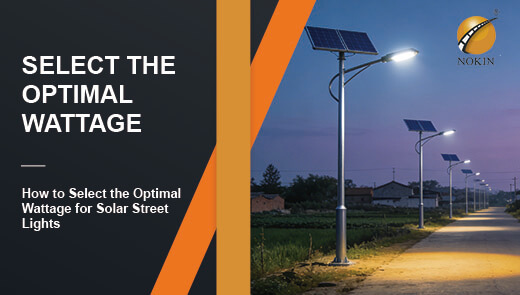How to Identify the Quality of Solar Street Lights and Poles
In the context of global advocacy of green energy, solar street lights are widely used in urban roads, rural streets, parks and scenic spots by virtue of their environmental protection and energy saving, convenient installation and other advantages. However, the quality of solar street lights and light poles on the market varies, and mastering the method of identifying their quality is crucial to safeguarding the project effect, prolonging the service life and enhancing the return on investment. Next, we will analyze in detail how to identify the quality of solar street lights and poles from multiple dimensions.
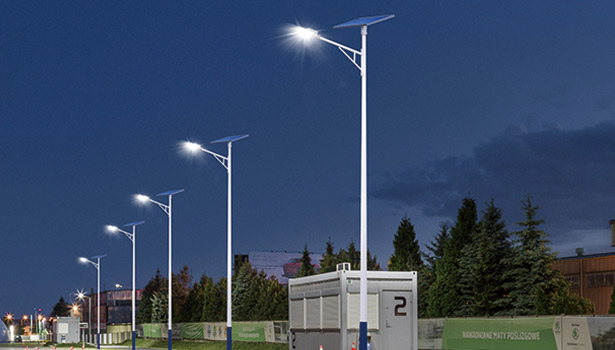
How to Identify the Quality of Solar Street Lights
Light Output Index -- Lumen and Light Efficiency
Lumen (unit lm) is a measure of luminous flux, representing the total amount of light emitted by the light source, the higher the value, the brighter the light. The higher the value, the brighter the light. Luminous flux is an important indicator of the amount of light output from a light source, which is not solely dependent on the power consumed by the light source.
Luminous Efficiency (Luminous Efficiency) is a measure of how efficiently a light source converts electrical energy into visible light, expressed in lumens per watt (lm/W). For example, for two streetlights of the same 100W, if Lamp A has a luminous efficiency of 70lm/W, its luminous flux is 7000lm; if Lamp B has a luminous efficiency of 80lm/W, its luminous flux can be up to 8000lm, even if they are of the same wattage, Lamp B will be brighter. This shows that when evaluating the brightness of a solar led street light, you can't just rely on the wattage, lumen and luminous efficacy are the key factors.
Solar street light battery capacity
LED lamps of different power have specific requirements for battery capacity. Generally speaking, a 100W LED panel usually requires a 3000mAh (3Ah) battery to meet the power demand of about 8 hours at night. For longer battery life, such as multiple nights of continuous lighting, an 8000mAh (8Ah) battery can power a 100W LED light for up to 3 days with smart lighting technology optimizing energy consumption.
When shopping, be wary of some merchants exaggerating the battery capacity. For example, some sellers label the battery capacity as high as 100Ah, but this may not be true. At this point, you can compare the weight of the battery to initially determine the authenticity of the capacity. Typically, high-capacity batteries weigh more. At the same time, but also to ensure that the battery capacity and LED lamp power and expected use of time to match, in order to protect the long-term stable operation of solar street lamps. In addition, lithium iron phosphate batteries and lead-acid batteries have their own advantages and disadvantages, the former has a long life, high security features, the latter is lower cost but relatively complex maintenance.
Solar Street light Solar Panel Size and Efficiency
As the “energy source” of the solar powered street light system, the solar panel bears the important task of converting solar energy into electricity and charging the battery. Its size and area as well as battery density directly affect the light energy capture and power generation efficiency. Usually, solar panels with larger size and higher cell density perform better in converting sunlight into electricity.
If the solar panel is undersized or inefficient, the batteries will not be able to fully charge during the day, resulting in a gradual decrease in street light brightness over time, especially in continuous cloudy and rainy weather, this problem will be more obvious. Therefore, when choosing a solar street light, it is important to take into account the size and efficiency of the solar panel to ensure that it can provide sufficient power for the batteries to maintain stable illumination of the street light under various weather conditions.
Waterproof and Moisture-Proof Design
As outdoor lighting equipment, solar powered led street lights are exposed to sun and rain for a long time, so waterproof and moisture-proof design is crucial. Inferior waterproof design will make the street light easy to enter water in rainy days, which will damage the internal components. Neglecting to prevent moisture will also bring serious consequences, in a humid environment, components are prone to rust, outdoor mosquitoes enter the light after the secretion of substances, but also directly corrode the control panel, PCB and other internal components, ultimately leading to the street light can not work properly. High-quality solar street lights should have a good waterproof sealing structure, which can effectively resist the intrusion of rain and moisture.
Controller Performance
Charge-discharge controller, i.e. solar controller, plays a key role in coordinating the work of solar panel, battery and load in the street light system. If the controller fails, the whole street light system will not operate normally, and may even damage the battery and cause serious safety hazards such as overheating and fire. Part of the controller to reduce costs, ignoring the heat dissipation design, when the load current or charging current is large, heat accumulation, will significantly shorten the service life of the controller.
In addition, the temperature compensation function should not be ignored. Controllers lacking this function, in high or low temperature environment, the monitoring error of the battery voltage is large, which may lead to undercharging of the battery in a low temperature environment, overcharging in a high temperature environment. Therefore, choosing controllers with good heat dissipation function and temperature compensation function is the key to guarantee the stable operation of the solar powered street light system.
Production Quality Inspection
In the production process of solar street light, the quality inspection of several links is indispensable: PCB outlet must be coated with waterproof adhesive to prevent water vapor from causing line short circuit, which will make the LED lights go out; applying heat dissipation silica gel between PCB and shell can ensure that the LED lights work within the normal temperature range; after completing the installation of PCB, it is necessary to carry out aging test to expose the potential problems in advance.
At the same time, we should strictly check whether the positive and negative poles of the lines between the fittings are correctly connected, tighten the screws of the fixed fittings (e.g. the fixed screws of the LED lens, controller, battery, etc.) to make sure that they won't be loosened and fall off during transportation; fasten the waterproof connectors of the lines between the fittings to prevent them from falling off during transportation; after connecting the LED lights with the controller, we will conduct a power-on test of the LED lights and confirm that there is no problem before installing the solar panel, so as to save troubleshooting. After connecting the LED lamps and controller, test the LED lamps by energizing first, confirm that there is no problem before installing the solar panel, which can save troubleshooting time; check whether the edge of the solar panel is designed with rubber ring, if not, then it needs to be protected by adhesive bonding of the edges; after completing the assembly, turn on the switch to cover the solar panel, and test the charging and discharging function of the street light system to see whether it is normal; in the final packaging link, use the foam of sufficient thickness and sturdy carton to protect the solar panel properly, so as to avoid the damage in transportation.
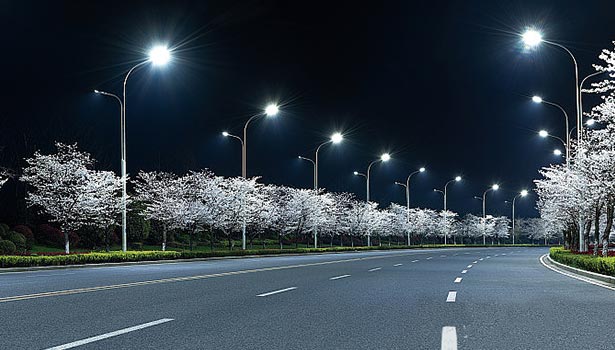
How to Identify the Quality of Solar Street Light Pole
Common Pole Types and Features
|
Material |
Advantages |
Disadvantages |
Typical Applications |
|
Stainless Steel Light Poles |
- Higher hardness than aluminum and iron |
- Relatively high price |
Courtyards, residential areas, parks |
|
Iron Poles (Q235 Steel Poles) |
- High hardness |
- Prone to corrosion and rust |
General road lighting, especially in developing countries |
|
Aluminum Poles |
- High strength for safety |
- Slightly lower strength than iron poles (can reach T6 standard after heat treatment) |
Parks, upscale residential areas, city landscape roads |
|
Fiberglass Reinforced Plastic (FRP) Light Poles |
- Lightweight |
- Shorter service life |
Limited applications |
Quality Testing Methods for Solar Street Light Poles
Structural size test
The upper diameter, lower diameter and flange size (length, width, thickness) of the solar street light pole are strictly tested and compared with the specifications in the contract and technical drawings. These dimensional parameters are directly related to the structural stability of the poles, ensuring that the poles are able to withstand the specified loads and withstand the effects of environmental factors.
Material considerations
Galvanizing is an important process to protect the surface of metal light poles and prevent rusting, and is mainly divided into two ways: hot dip galvanizing and cold dip galvanizing. Hot-dip galvanizing involves immersing the metal in a molten zinc solution, which creates a thicker, more durable layer of zinc with better rust prevention; cold-dip galvanizing, on the other hand, usually involves the application of zinc-rich paint, which has a thinner layer of zinc and a relatively weaker ability to prevent rust. The galvanizing method specified in the contract has a direct impact on the service life of the poles. If hot-dip galvanizing is not used as required, the poles will be more prone to rust, and their structural stability will be threatened by long-term use.
Comparative analysis of data
Compare the test results of the structural dimensions of the light poles (e.g. flange thickness, top and bottom diameters, etc.) in detail with the agreed specifications in the contract and technical drawings. In the actual test, if the actual measurement data is found to deviate from the contract requirements, it means that the production of light poles does not strictly follow the contract specifications and there may be quality problems.
Impact of substandard quality
Non-compliance with the dimensions and materials of the light poles may lead to serious consequences, such as structural failure, increased maintenance costs and even legal disputes. Therefore, ensuring that the components of the pole meet the standards is the key to guaranteeing the safety, reliability and service life of solar street lights.
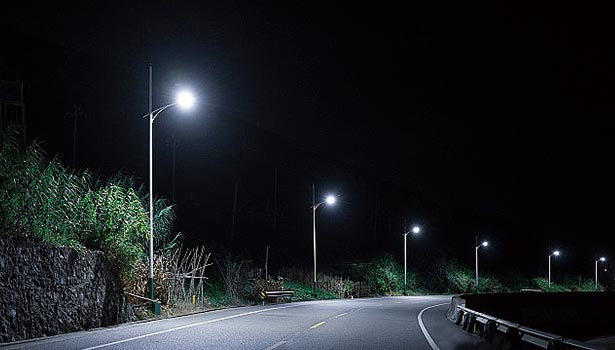
After-Sales Service and Warranty Considerations
Before formalizing the procurement project, it is recommended to purchase samples from the manufacturer for testing. By actually using and testing the samples, the quality of the streetlights can be more intuitively understood. Reliable solar street light manufacturers should provide perfect after-sales service, including timely technical support, fault repair and so on. Usually, the warranty period of solar powered street lights is three years, during which the manufacturer needs to be responsible for product quality issues. Although solar street lights need almost no maintenance on a daily basis, high quality after-sales service and reasonable warranty policy can provide users with a strong guarantee and free from worries during long-term use.
Conclusion
Identifying the quality of solar street lights and poles requires comprehensive consideration of many aspects. From the light output of the street light, battery, solar panel, waterproof design, controller, to the type, material and size of the pole, to after-sales service and warranty, each link is crucial. Only by comprehensively mastering these identification methods and carefully evaluating them when purchasing can we select a reliable quality solar street light system, realize the long-term and stable operation of green energy-saving lighting, and give full play to its economic and environmental benefits.

